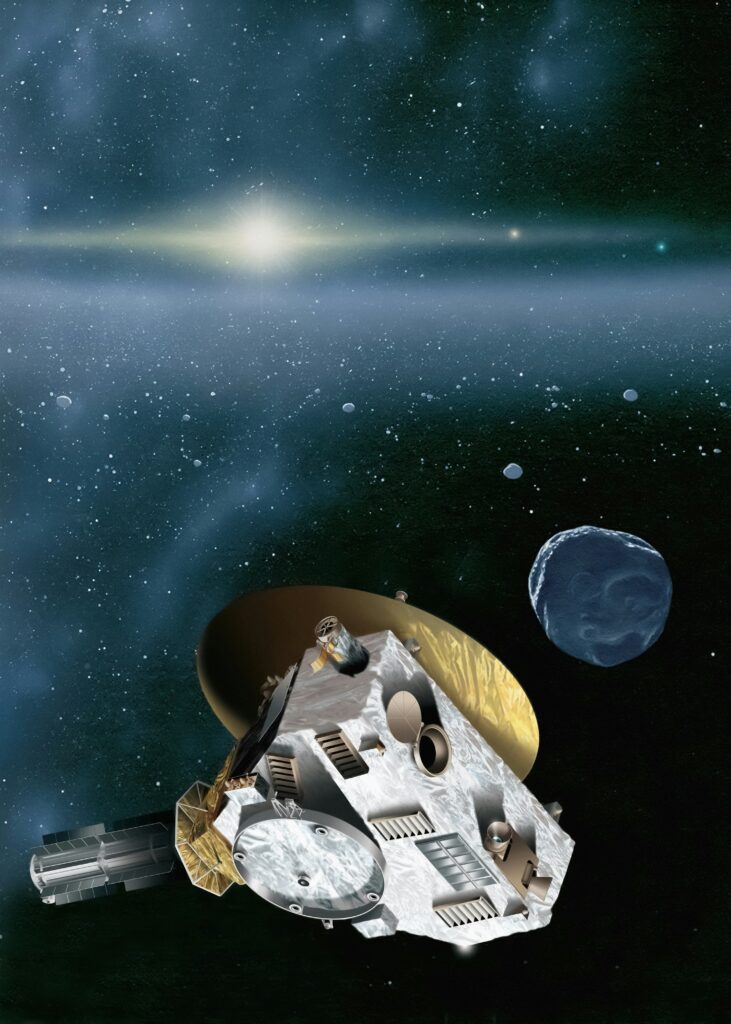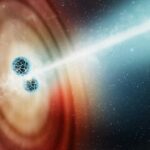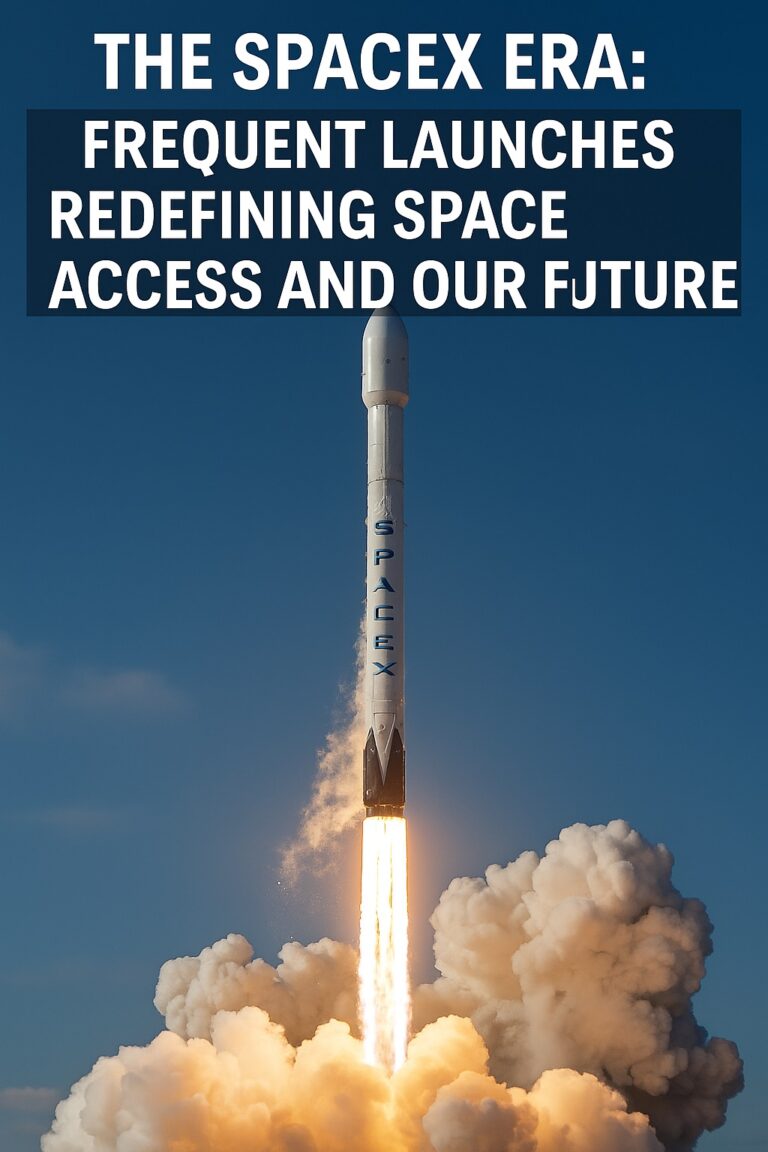
Published Date: June 14, 2025
Disclaimer: This article is for informational purposes only. The author is an independent science writer and not affiliated with NASA or ESA. All data is sourced from official public resources as of 2025.
🌌 Introduction
Is Earth the only place in the universe with life? NASA’s ongoing Europa Clipper mission aims to get us closer to an answer. Among the many celestial bodies in our solar system, Europa, one of Jupiter’s largest moons, stands out as a compelling candidate for extraterrestrial life.
While launched in October 2024, 2025 marks a key year in the Clipper’s long journey to arrive at Europa by 2030. In this article, we explore the science behind Europa’s habitability, the mission’s design, and its profound implications for our understanding of life beyond Earth.
🌍 1. Europa: A Prime Candidate for Life
1.1 The Subsurface Ocean
Beneath Europa’s icy shell lies a massive global ocean, believed to hold twice the water volume of Earth’s oceans. This hypothesis is supported by data from previous missions like Galileo and Hubble Space Telescope observations.
🔗 NASA Europa Overview
1.2 Ingredients for Life: Present & Promising
Scientists look for three main ingredients for life:
- Water: Confirmed beneath the ice crust.
- Energy: Jupiter’s gravity causes tidal flexing that could generate hydrothermal activity.
- Chemistry: Elements like carbon, hydrogen, nitrogen, oxygen, phosphorus, and sulfur—essential for life—may be present.
🔗 NASA Astrobiology: Habitability
1.3 Surface Plumes and Cryovolcanism
NASA has detected possible plumes of water vapor erupting from Europa’s surface, likely connected to the subsurface ocean. These plumes may carry signs of life and are a prime sampling target for Clipper.
🔗 NASA Europa Plume Evidence
🚀 2. The Europa Clipper Mission: A Scientific Milestone
2.1 Launch and Journey
Europa Clipper launched on October 14, 2024, aboard a SpaceX Falcon Heavy from NASA’s Kennedy Space Center.
🔗 NASA Clipper Launch Press Release
It will use gravitational assists to slingshot toward Jupiter, covering roughly 1.8 billion miles. Arrival is expected in 2030. Instead of orbiting Europa directly (due to Jupiter’s strong radiation), it will perform around 49 flybys.
🔗 Europa Clipper Mission Profile – JPL
2.2 Mission Objectives
Key scientific goals of the mission include:
- Determining the ice shell thickness and underlying ocean depth
- Analyzing surface and subsurface chemistry
- Detecting and sampling plumes, if active
- Mapping geology and tectonic activity
- Identifying sites for a possible future lander
🔗 Europa Clipper Science Goals
2.3 Instrument Suite Onboard
Europa Clipper carries an advanced suite of instruments:
- REASON (Radar): To probe the ice shell and detect water
- EIS (Europa Imaging System): For high-res surface imaging
- MASPEX (Mass Spectrometer): For analyzing atmospheric particles and plume composition
- SUDA (Surface Dust Analyzer): For sampling ejected ice grains
- Europa-UVS, PIMS, E-THEMIS, and magnetometers to measure atmosphere, heat, and magnetic fields
🔗 Europa Clipper Instruments – JPL
2.4 Searching for Biosignatures
Clipper is not designed to find alien organisms directly, but it will search for biosignatures: molecules or chemical patterns that could suggest the presence—or history—of life. This includes isotopic ratios or organic compounds not easily explained by geology alone.
🔗 NASA Astrobiology: Biosignatures
🌌 3. The Broader Context: Other Missions & Challenges
3.1 ESA’s JUICE Mission
Launched by the European Space Agency in April 2023, JUICE (Jupiter Icy Moons Explorer) is another mission aimed at exploring Ganymede, Callisto, and Europa. Together, JUICE and Clipper represent a global effort to explore Jupiter’s moons.
🔗 ESA JUICE Overview
3.2 Future Europa Lander: Conceptual Only
NASA is studying the possibility of a future Europa lander, which could dig into surface ice to directly sample organic material. However, this mission has not been funded or scheduled, and remains a concept for now.
🔗 NASA’s Europa Lander Concept Study
3.3 Technical Challenges
The mission faces considerable hurdles:
- Radiation: Jupiter’s magnetic field creates an intense radiation environment.
- Temperature: Europa’s surface is -160°C (-260°F).
- Communication delay: Signals take up to 45 minutes round trip.
- Detection limits: Even if biosignatures exist, interpreting them unambiguously is difficult.
🧪 Conclusion
Europa Clipper represents a milestone in humanity’s pursuit of life beyond Earth. While its full scientific payoff won’t come until the 2030s, the mission lays the groundwork for what could be one of the most profound discoveries in history.
In 2025, we stand at the beginning of a journey that could change our understanding of life in the universe—starting with a frozen moon, far from the Sun, with an ocean of secrets beneath its shell.
👤 About the Author
Sandeep is an independent science writer with a passion for space exploration and astrobiology. He is not a certified astrophysicist but focuses on breaking down complex space science topics for a general audience using publicly available NASA and ESA data. His work emphasizes accuracy, clarity, and curiosity.









